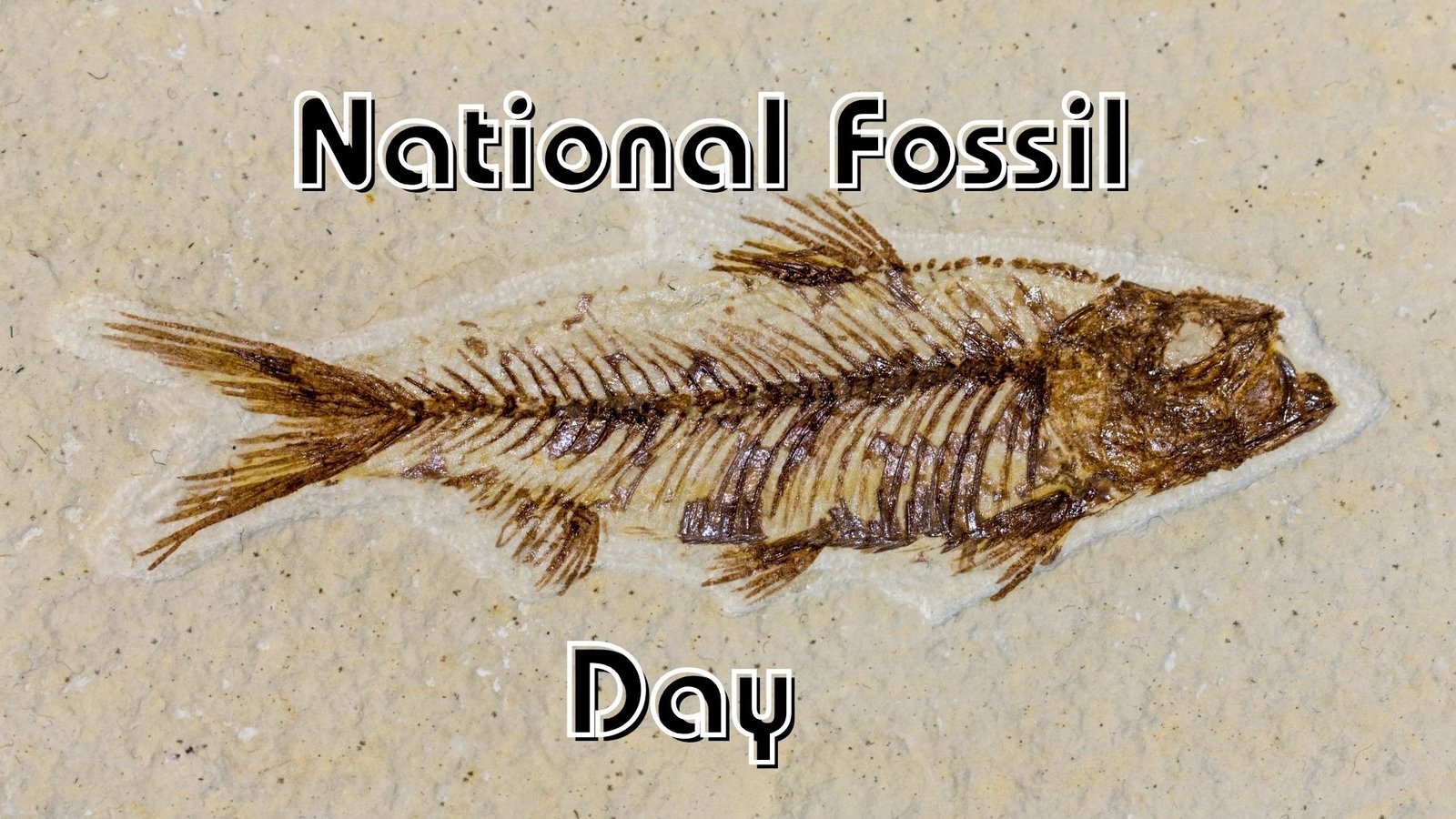Every stone, shell, or petrified leaf holds a story — a whisper from deep time. National Fossil Day is our annual moment to stop, look, and listen to those whispers. It’s a celebration of life’s history, evolution, and the mysteries written in stone.
What Is National Fossil Day?
National Fossil Day was established in 2010 by the U.S. National Park Service to promote public awareness, education, and stewardship of fossils.
It is observed every year on the Wednesday of the second full week in October, bringing together museums, universities, fossil clubs, and parks from around the world.
In 2025, National Fossil Day will be celebrated on Wednesday, October 15.
Each year features a special theme and artwork highlighting prehistoric life — from ancient seas to fossilized forests — inspiring people to learn and participate.
Why Celebrate Fossils?
Fossils are not just relics — they are storytellers of the planet’s ancient past. They reveal how life evolved, adapted, and sometimes vanished.
1. Time Machines in Rock
A fossil is any preserved trace or remnant of ancient life. Through fossils, scientists reconstruct extinct species, past climates, and major events like mass extinctions.
2. Earth’s Biography & Climate Records
Fossils help decode how continents drifted, oceans formed, and climates shifted. Finding marine fossils in deserts, for instance, tells us those lands were once under the sea.
3. Evolution and Extinction
Fossils show us the gradual changes that led from ancient creatures to modern species. They are also the only direct record of life’s biggest crises — like the extinction of the dinosaurs.
4. Educational and Inspirational
For students and nature lovers alike, fossils spark imagination. They connect us to deep time and encourage curiosity about how life and Earth evolved together.
5. Heritage and Conservation
Fossil sites are part of our natural heritage. They must be protected from illegal collecting and damage. National Fossil Day reminds us of the responsibility to preserve these treasures for future generations.
How Fossils Form — Nature’s Patience
Fossilization is rare and remarkable. Most living things decay, but a few are preserved under the right conditions. Here’s how nature works her magic:
- Permineralization (Petrification): Minerals fill the pores of buried bones or wood, turning them to stone.
- Compression/Impression: Soft tissues leave flat imprints or thin carbon films in rock layers.
- Molds and Casts: When an organism dissolves, the space it leaves behind can be filled with minerals, forming a 3D cast.
- Amber, Ice, and Tar: Some creatures are preserved whole in amber resin, frozen ice, or sticky tar — sometimes even with hair or DNA intact.
Only a tiny fraction of all life ever fossilizes. Each fossil is therefore a rare and valuable chapter in Earth’s grand history.
A Brief History of National Fossil Day
The first National Fossil Day was held on October 13, 2010, during Earth Science Week. Since then, it has grown into a nationwide celebration involving hundreds of partners — from museums and parks to classrooms and local communities.
Every year, new artwork and contests encourage students, artists, and fossil enthusiasts to get involved. It’s not just about rocks — it’s about imagination, discovery, and protecting our shared natural heritage.
Fascinating Fossil Stories from Around the World
- Fossil Cycad National Monument (USA): Once famous for its ancient plant fossils, this site vanished due to illegal fossil collection — a powerful reminder of why conservation matters.
- National Fossil Wood Park, Tiruvakkarai (India): Home to around 20-million-year-old petrified trees, this site reveals India’s ancient tropical forests.
- Sathanur Fossil Wood Park (India): Displays a fossilized tree trunk over 100 million years old, beautifully preserved from the Cretaceous period.
- The Charlotte Whale (USA): A fossilized whale found far inland in Vermont — proof that the area was once covered by glacial seas.
Each discovery challenges what we know about ancient climates, landforms, and the evolution of life.
Why Fossils Matter — Even Today
Fossils connect us to the deep time of Earth’s history. They help us understand biodiversity, past climate shifts, and how species adapt or disappear.
For countries like India, with rich fossil heritage sites — from dinosaur eggs in Gujarat to ancient forests in Tamil Nadu — they are also symbols of national pride and scientific curiosity.
Celebrating fossils is not about looking backward; it’s about understanding the forces that shaped our world and will shape its future.
Final Thought
Every fossil is a memory carved in stone — a leaf that once fluttered, a creature that once swam, a forest that once grew.
National Fossil Day reminds us that the Earth keeps records — we just need to learn how to read them.
So, this October, take a moment to step into the deep past. Visit a fossil site, marvel at a museum exhibit, or simply hold a stone and wonder: What stories might be hidden inside?

Leave a Reply